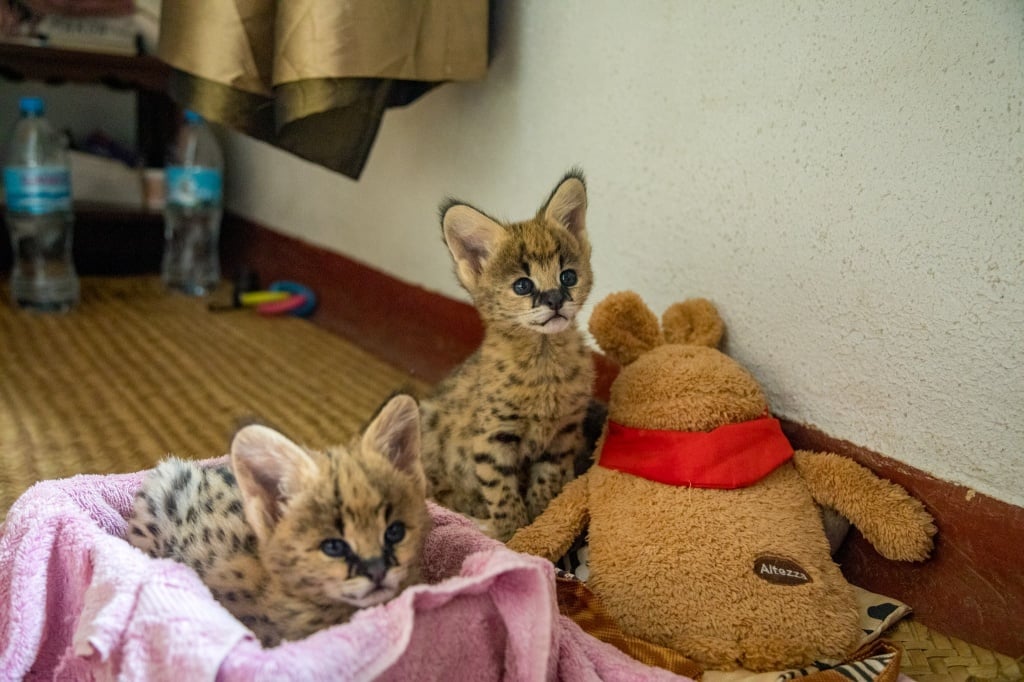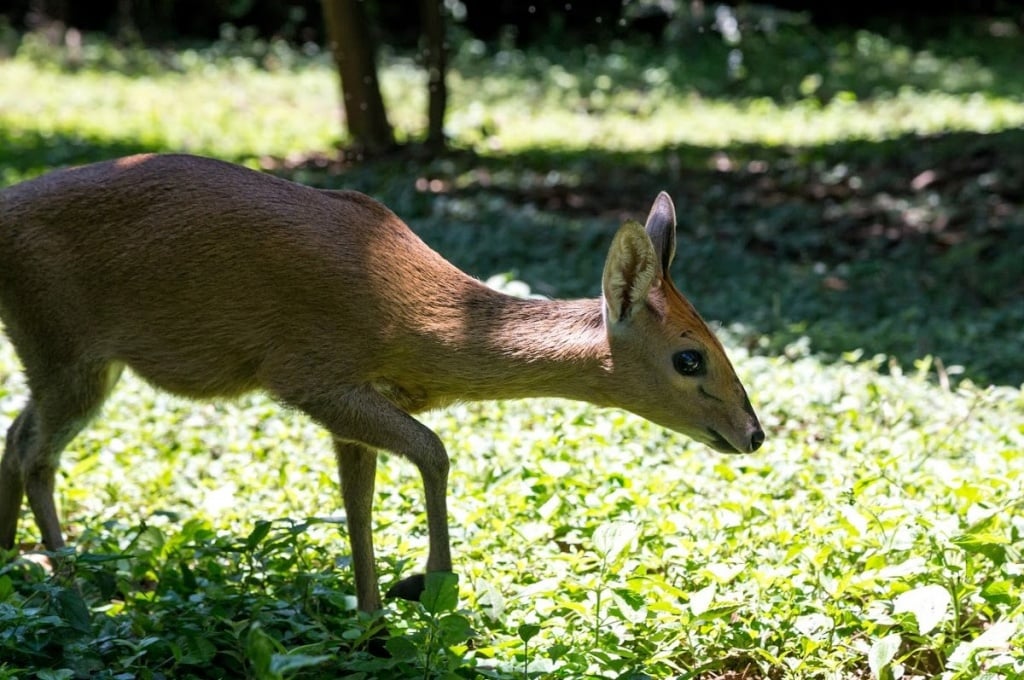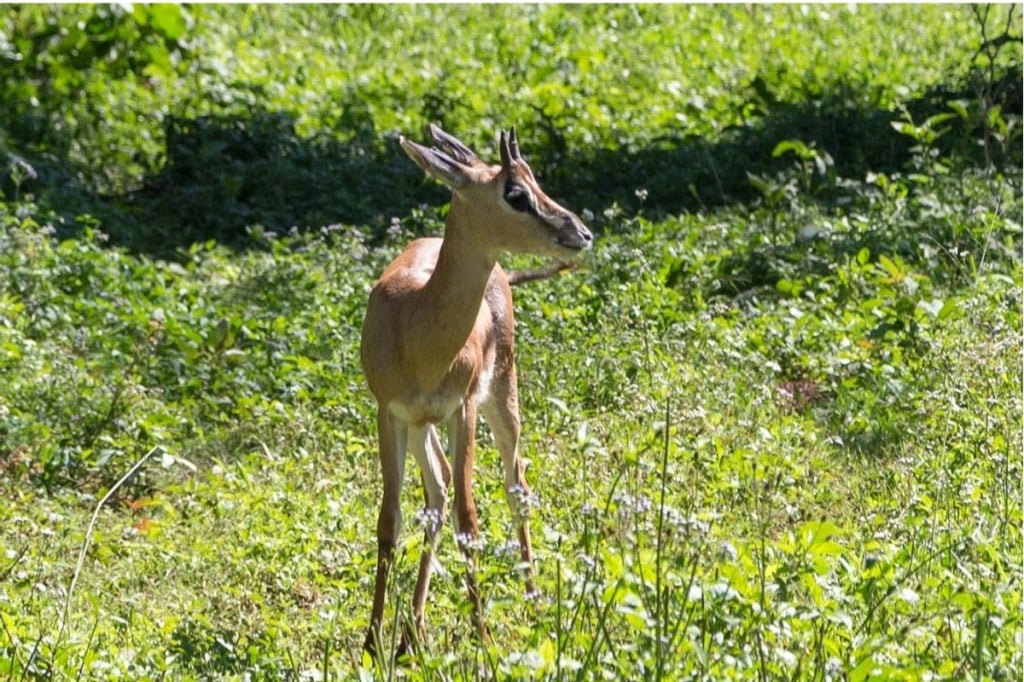Animals on Kilimanjaro
Most Kilimanjaro climbers want to experience the wealth of Tanzania’s wildlife at some point before or after they summit Africa’s tallest mountain. Certainly, the best way to see Tanzania’s incredible wildlife is to go on a safari to one of Tanzania’s National Parks or the famous Ngorongoro Crater. However, even while hiking Mount Kilimanjaro climbers are sure to see some interesting animals on the mountain.
Climbers hoping to spot elephants during their trek should choose the Rongai route, as the trail crosses the northern side of the mountain where elephants are more likely to be spotted. If you’re climbing by another route, you are still likely to see plenty of exotic animals that live on mount Kilimanjaro. Various monkeys, antelope, exotic cats, and highland animals are all commonly seen during Kilimanjaro treks.
What animals can one see on Kilimanjaro?
More animals live in the lush tropical rainforests at the base of Kilimanjaro than reside in the highlands, this is because of access to water and food. As your group climbs higher, the less wildlife will be present around you. All animals in National Parks of Tanzania are completely free to roam, meaning any animals spotted on Kilimanjaro are definitely ‘wild’. Thankfully, your team will not come across any dangerous lions or predators during your climb! You are more likely to see a shy species of antelope, Abbott’s Duiker, or chattering monkeys throughout your climb. Here are eight of our favorite animals spotted on Kilimanjaro.
Colobus Monkey
The colobus monkey is native to Tanzania and lives in family groups high in the trees. If you’re seeing one colobus, he likely has a sister or brother somewhere in a nearby tree. Look for the distinguishing long black-and-white tail and the loud chattering noise these monkeys make.
The colobus monkey is in the category of “guereza primates” and those found on Mount Kilimanjaro are an endangered species, so take plenty of photos but don’t disturb these special monkeys.
Serval Cat
Big cats such as lions and leopards attract more attention than other animals on Kilimanjaro, but there are several other types of ‘big cats’ to be spotted in Tanzania. The serval cat is a wild cat that looks somewhat like a cheetah in its coloring, but is smaller and more slender than its cousin. The serval cat has the longest legs (relative to the rest of the body), with large ears and a pattern of black stripes and spots across their body.
This solitary cat is active day and night, and usually is observed when it is out hunting. Serval cats prey on small rodents, but will eat nearly anything; from antelopes and wild rabbits, to insects or reptiles - even grass!
If your hiking group is quiet, you may be lucky enough to spy a serval cat during your Kilimanjaro climb.
Aardvark
This unique and interesting animal is found only in Sub-Saharan Africa. While they may look a bit like a pig (and their name derives from the Afrikaans word for ‘ground pig’,) they are actually related to a favorite African mammal - the elephant! Now, those big ears and long nose don’t exactly resemble an elephant’s, but we won’t argue with science.
Tree Hyrax
Another animal found on Kilimanjaro, one also surprisingly related to the mighty elephant, is the small, nimble tree hyrax. Tree hyraxes live in forested areas where (you guessed it!) they live amongst the trees. The lower forests of Kilimanjaro are a natural habitat for these animals.
You may hear a tree hyrax before you see one, these interesting creatures make a distinct ‘call’ in the early evening and at nighttime. The noises vary, from a cackle to a loud shriek, but don’t be alarmed, the tree hyrax might just be marking its territory.
In order to spot these special creatures, you will need to be paying close attention after dark. Aardvarks are nocturnal and avoid the heat of the sun during the day. At night when it is cooler, they come out and feed on ants and termites. They have been recorded walking miles to find a nice termite mound to feast on, using their long snouts to reach the tiny insects.
Duiker
A duiker is a type of antelope, and the name ‘duiker’ comes from the Dutch word “to dive”, which accurately describes this animal’s leap into the bushes to avoid predators.
When compared to a common grassland antelope, the duiker is obviously smaller with different shaped horns and a hump on its back. Duiker’s reside in heavily wooded areas, so you aren’t likely to spot them on your typical safari through a savannah. The slopes of Mount Kilimanjaro are an excellent location to see Tanzania’s native duikers in their natural habitat.
Lucky climbing groups will happen to see an Abbott’s Duiker, a small, endangered species of duiker that survive in only a few remaining locations in Tanzania; Udzungwa Mountains and Mount Kilimanjaro among the rare places to see these antelope. Predators aren’t to blame for the decline of Abbott’s Duiker, instead it is the shrinking natural habitat and deforestation affecting their diet which is considered the most likely cause.
The wildlife of Tanzania is so precious, and more and more species are at risk. That is why it is important for tourists to book with responsible tour operators, and consider the initiatives each company takes to protect Tanzania’s most precious resource. Learn more about Altezza Travel’s efforts to protect Tanzania’s wildlife, including our animal rehabilitation center - the first and only in Tanzania!
White-Tailed Mongoose
Resembling the body-type of a weasel, mongoose are a nocturnal mammal native to Africa. Mongoose may be most well-known for their ability to take-down large, venomous snakes, including cobras, such as in Rudyard Kipling’s story, the Jungle Book. Of the mongoose family, the white-tailed mongoose is the largest. Their body is typically a brown color, for camouflage in wooded areas. What makes them distinct from other mongoose are their long, white fluffy tails, hence their name “White-tailed Mongoose”.
Similar to the skunk, when frightened, the mongoose can release a musky-odor from a gland in it’s rear end, so don’t scare a mongoose if you happen to see one!
Did you know that White-Tailed Mongoose are commonly spotted at Altezza’s Aishi Machame Hotel? Guests who stay at our top-quality hotel are truly at the foot of Mount Kilimanjaro and have the chance to see some of the unique wildlife that live on the mountain.
Marsh Mongoose
In the same mongoose family is the Marsh Mongoose. While smaller than its white-tailed brother, the marsh mongoose is significant - it is aquatic! This mongoose enjoys swimming in swampy areas. The Marsh Mongoose hunts for birds in a unique way: this clever animal will pretend it is sunbathing and turn its belly (and bum) to the sky. The pink skin against the mongoose’s fur attracts birds to get a closer look - and then the swift mongoose catches its dinner.
Kilimanjaro hikers who walk quietly may easily see this mammal during their hike. Why? Mongoose prefer to tread on smooth paths, just like the Kilimanjaro climbing trail!
Altezza guests staying at the Aishi Machame Hotel may also spot this interesting mongoose during their stay, as they are commonly seen around the grounds.
White-Necked Raven
The higher your group climbs, the less Mount Kilimanjaro wildlife will be present around. One animal, however, thrives in higher altitudes: the White-Necked Raven. This noble-looking black bird with a collar of white feathers around its neck can be seen at your campsites at high altitudes.
Ravens eat everything - even human food! So make sure not to leave your snacks out, even if they are in a container because this clever bird has been known to reason-out how to open packages, or just carry that bag of chips away to eat it at the top of a tree.
Bush Baby
We have saved the cutest for last. The adorable Bush Baby (sometimes known as Galagos) are endemic to Kilimanjaro’s forests. This small nocturnal primate is known for its wide eyes and adorable features.
You may hear them from your comfortable room at Altezza’s Aishi Machame Hotel, or your warm tent throughout your Kilimanjaro climb. These animals are most active at night, often jumping through the trees and making noise. The sound of the Bush Baby is what gives it its name: it sounds like a baby crying! Bush babies are cousins to monkeys, but don’t really look like other primates: they are small, with soft fluffy grey or brown fur and cute, pointy ears that help them hear at night.
They are undeniably cute and the name “Bush Baby” is certainly fitting for these little primates.
Come See Kilimanjaro’s Animals for Yourself
These eight animals are only a few of the wildlife you may see throughout your Kilimanjaro climb. While we enjoy sharing about Kilimanjaro’s beauty and diverse wildlife, you really should experience it for yourself.
Interested in climbing Kilimanjaro? Want to experience Tanzania’s incredible wildlife and pristine nature? Book a safari or Kilimanjaro climb with Altezza today!
Have questions? Our professional travel experts are ready to answer any of your questions.




















